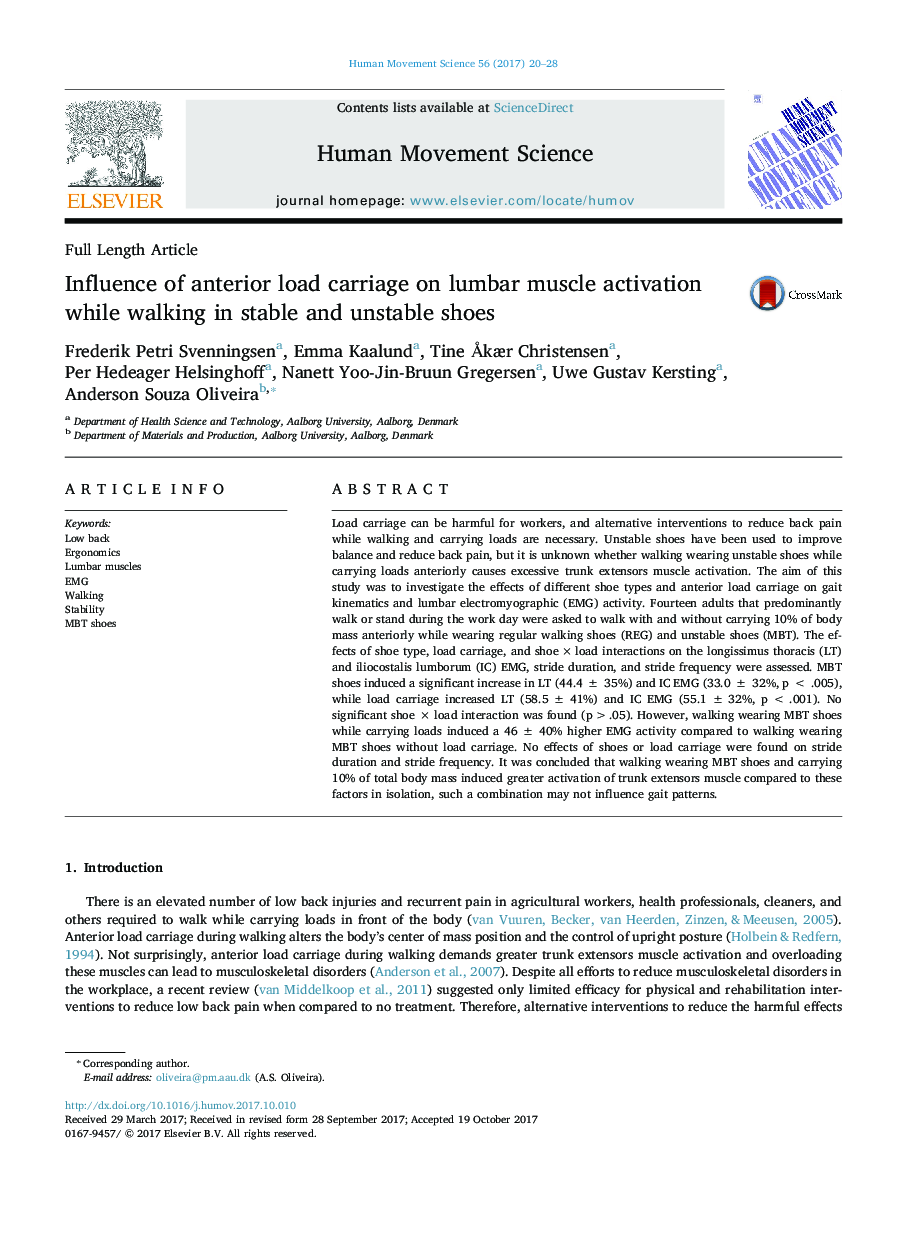| Article ID | Journal | Published Year | Pages | File Type |
|---|---|---|---|---|
| 7290962 | Human Movement Science | 2017 | 9 Pages |
Abstract
Load carriage can be harmful for workers, and alternative interventions to reduce back pain while walking and carrying loads are necessary. Unstable shoes have been used to improve balance and reduce back pain, but it is unknown whether walking wearing unstable shoes while carrying loads anteriorly causes excessive trunk extensors muscle activation. The aim of this study was to investigate the effects of different shoe types and anterior load carriage on gait kinematics and lumbar electromyographic (EMG) activity. Fourteen adults that predominantly walk or stand during the work day were asked to walk with and without carrying 10% of body mass anteriorly while wearing regular walking shoes (REG) and unstable shoes (MBT). The effects of shoe type, load carriage, and shoeâ¯Ãâ¯load interactions on the longissimus thoracis (LT) and iliocostalis lumborum (IC) EMG, stride duration, and stride frequency were assessed. MBT shoes induced a significant increase in LT (44.4â¯Â±â¯35%) and IC EMG (33.0â¯Â±â¯32%, pâ¯<â¯.005), while load carriage increased LT (58.5â¯Â±â¯41%) and IC EMG (55.1â¯Â±â¯32%, pâ¯<â¯.001). No significant shoe à load interaction was found (p>.05). However, walking wearing MBT shoes while carrying loads induced a 46â¯Â±â¯40% higher EMG activity compared to walking wearing MBT shoes without load carriage. No effects of shoes or load carriage were found on stride duration and stride frequency. It was concluded that walking wearing MBT shoes and carrying 10% of total body mass induced greater activation of trunk extensors muscle compared to these factors in isolation, such a combination may not influence gait patterns.
Related Topics
Life Sciences
Neuroscience
Cognitive Neuroscience
Authors
Frederik Petri Svenningsen, Emma Kaalund, Tine Ã
kær Christensen, Per Hedeager Helsinghoff, Nanett Yoo-Jin-Bruun Gregersen, Uwe Gustav Kersting, Anderson Souza Oliveira,
